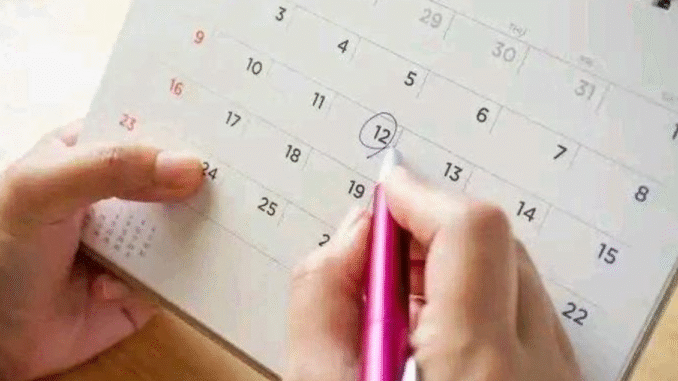
Understanding the Menstrual Cycle
BREAKING NEWS: Black Chully New Sextape Leaked Showing Her Creaming Pussy As She Rides On, A Cucumber
The menstrual cycle, typically lasting 21 to 35 days (with 28 days being the average), is divided into phases: the follicular phase, ovulation, and the luteal phase. A woman’s period marks the start of the follicular phase, when the body prepares to release an egg. Pregnancy occurs when sperm fertilizes an egg during or shortly after ovulation, so the timing of ovulation is key to answering this question….CONTINUE FULL READING>>>
When Does Ovulation Happen?
Ovulation, when a mature egg is released from the ovary, typically occurs around day 12 to 16 of a 28-day cycle, counting from the first day of the period. However, this varies:
- Shorter cycles (21–25 days): Ovulation may occur as early as day 7–10.
- Longer cycles (30–35 days): Ovulation might happen around day 16–20.
- Irregular cycles: Ovulation timing can be unpredictable, making it harder to pinpoint.
After a period ends (typically lasting 3–7 days), ovulation is usually 5 to 10 days away in a standard cycle. This means the window for conception begins roughly a week after the period ends, depending on cycle length.
The Fertile Window
BREAKING NEWS: Black Chully New Sextape Leaked Showing Her Creaming Pussy As She Rides On, A Cucumber
The fertile window—the time when conception is most likely—spans about 6 days: the 5 days leading up to ovulation and the day of ovulation itself. Sperm can survive in the female reproductive tract for up to 5 days, while the egg is viable for about 12–24 hours after ovulation. If intercourse occurs during this window, fertilization can happen, potentially leading to pregnancy.
For example:
- If a woman’s period ends on day 5 of her cycle, and she ovulates on day 14, her fertile window is roughly days 9–14.
- Conception could occur if intercourse happens during this time, with fertilization typically occurring within hours to a day after ovulation.
From Fertilization to Confirmed Pregnancy
Once fertilization occurs, the fertilized egg (now an embryo) travels to the uterus and implants in the uterine lining, a process that takes 6–10 days. After implantation, the body begins producing the pregnancy hormone hCG, which can be detected by a pregnancy test. Most home pregnancy tests can confirm pregnancy 10–14 days after ovulation, or roughly 1–2 weeks after a missed period.
So, in total:
- From the end of a period to ovulation: 5–10 days (depending on cycle length).
- From ovulation to fertilization: Hours to 1 day.
- From fertilization to implantation: 6–10 days.
- From implantation to detectable pregnancy: A few days to a week.
In a typical 28-day cycle, a woman could confirm pregnancy about 2–4 weeks after her period ends, assuming conception occurs during the fertile window.
Factors That Affect Timing
Several factors can influence how quickly a woman becomes pregnant after her period:
- Cycle regularity: Irregular cycles make ovulation timing harder to predict.
- Age: Fertility declines with age, particularly after 35, potentially delaying conception.
- Health conditions: Conditions like PCOS or thyroid issues can disrupt ovulation.
- Lifestyle factors: Stress, diet, or excessive exercise may affect cycle regularity.
- Timing of intercourse: Missing the fertile window reduces the chance of conception.
Tips for Tracking Ovulation
BREAKING NEWS: Black Chully New Sextape Leaked Showing Her Creaming Pussy As She Rides On, A Cucumber
To better understand when conception is possible, women can track ovulation using:
- Ovulation predictor kits (OPKs): These detect the luteinizing hormone (LH) surge before ovulation.
- Basal body temperature (BBT): A slight temperature rise indicates ovulation has occurred.
- Cervical mucus monitoring: Changes in mucus consistency signal the fertile window.
- Cycle tracking apps: These estimate ovulation based on cycle data.
When to Seek Help
If conception doesn’t occur after 12 months of trying (or 6 months for women over 35), consulting a healthcare provider is recommended. They can assess for underlying issues and offer guidance on fertility treatments if needed.
Final Thoughts
The time it takes to become pregnant after a period depends on the menstrual cycle and ovulation timing, typically occurring within 2–4 weeks after a period ends if conception happens during the fertile window. Understanding your cycle and tracking ovulation can improve the chances of conception. Every woman’s body is unique, so patience and awareness are key. If you’re concerned about fertility or need personalized advice, consult a healthcare professional for tailored support…..CONTINUE FULL READING>>>
